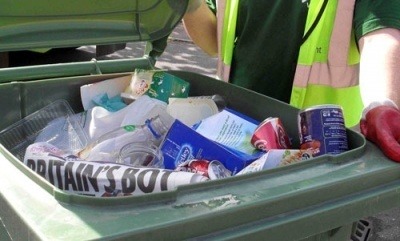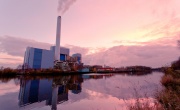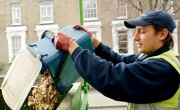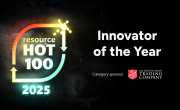Northern Ireland recycling rate up 3.7 per cent
Northern Ireland’s household waste recycling rate has jumped 3.7 per cent to 48.1 per cent, leaving England’s recycling rate languishing behind those of the devolved nations.
The latest ‘Northern Ireland local authority collected municipal waste management statistics’ for 2017/18 were released yesterday (29 November) by the Department of Agriculture, Environment and Rural Affairs (DAERA). The statistics reveal that Northern Ireland has registered a significant increase on its 2016/17 household waste recycling rate of 44.3 per cent, while its local authority collected (LAC) municipal waste recycling rate increased from 44 per cent to 47.6 per cent.
The country is building on strong results reported earlier in the year, with the household waste recycling rate exceeding 50 per cent for the first time in the first quarter of 2017/18.
In terms of tonnages collected and sent for recycling, the household figure increased by 8.2 per cent to 420,265 tonnes, while the LAC municipal waste figure increased by 7.3 per cent to 465,777 tonnes. Meanwhile, dry recycling rates have also slightly increased, with the LAC municipal dry recycling rate increasing by 0.6 per cent to 25.3 per cent, and the household waste dry recycling rate increasing by 0.5 per cent to 23.3 per cent.
There have been notable increases in composting rates, with the municipal composting rate increasing by three per cent to 22 per cent, with 216,717 tonnes of LAC municipal waste sent for composting in 2017/18. The household composting rate increased by 3.2 per cent, going from 21.4 per cent to 24.6 per cent. Such increases have previously been linked to the introduction of new rules regarding the collection of food waste, with all councils in Northern Ireland now required to provide a container for the separate collection of food waste (potentially combined with other bio-waste).
In terms of individual local authorities, all local authorities increased their household waste recycling rate compared to 2016/17 except for Causeway Coast & Glens, which registered the lowest recycling rate at 42.2 per cent. Mid Ulster posted the highest rate with 54.3 per cent.
Mid & East Antrim and Newry, Mourne & Down reported the largest increases on their recycling rates, with Mid & East Antrim moving up by 7.5 per cent to 52.8 per cent, including a seven per cent increase in its composting rate at 32.3 per cent. Newry, Mourne & Down, meanwhile, recorded a six per cent increase to take it up to 46.1 per cent, with an accompanying 5.8 per cent increase in its composting rate, bringing it up to 22.6 per cent.
The three councils with the highest household waste recycling rates are:
- Mid Ulster – 54.3 per cent
- Mid & East Antrim – 52.8 per cent
- Antrim & Newtownabbey – 52.2 per cent
The three councils with the lowest household waste recycling rates are:
- Causeway Coast & Glens – 42.2 per cent
- Derry City & Strabane – 43.3 per cent
- Belfast – 44.4 per cent
There are two overarching waste management groups in Northern Ireland covering 75 per cent of the population, which produce, develop and implement Waste Management Plans for their areas of responsibility. Six councils in the east of the country make up arc21, while two in the north make up the North West Regional Waste Management Group (NWRWMG). The remaining three councils belong to no waste management group.
There was some distance between the recycling rates for arc21 and NWRWMG as a whole, with arc21 posting a 48.4 per cent household recycling rate and NWRWMG registering a rate of 42.8 per cent.
Following a large increase from 2009/10 to 2016/17, the LAC municipal waste energy recovery rate (waste sent to incineration in order to generate energy) has levelled out at 18.5 per cent, only 0.1 per cent higher than the previous year. In 2017/18, 179,899 tonnes of LAC municipal waste arisings were sent for energy recovery.
The amount of LAC municipal waste sent to landfill has also decreased by 13.1 per cent, from 367,484 tonnes to 319,212 tonnes between 2016/17 and 2017/18, resulting in a landfill rate of 32.6 per cent for 2017/18, 4.6 percentage points lower than that reported the previous year. The household waste landfill rate fell to 32 per cent, down 4.7 per cent on the 2016/17 rate of 36.7 per cent. In terms of biodegradable LAC municipal waste sent to landfill, the figure was 16.2 per cent lower than the 2016/17 figure, falling to 171,295 tonnes from 204,380 tonnes.
England falling behind
Northern Ireland’s latest results have brought it ahead of England, leaving the UK’s largest nation behind all its devolved neighbours in terms of recycling rates. England’s household waste recycling rate currently stands at 44.9 per cent, while Scotland’s stands at 45.6 per cent for 2017, with Northern Ireland now in second place with 48.1 per cent behind Wales, which is far out in front on 62.7 per cent for 2017/18.
England’s recycling rates have stalled in recent years, while the devolved nations have been taking steps to push their recycling rates up. Wales in particular has invested heavily in recycling in the last few years, most recently injecting £5.4 million into reuse and recycling projects in November, and making £50 million in capital funding available to support changes in Welsh recycling services. These investments follow a £15 million injection of capital funding announced in May and £7.5 million of funding announced in February.
Such a high level of investment shows the Welsh Government’s seriousness in pushing Wales’ recycling rates up as far as they can go, while Northern Ireland’s introduction of a statutory requirement to collect food waste shows that government leadership can lead to significant gains in recycling. Local authorities in England will be eagerly anticipating the publication of the Resources and Waste Strategy to find out if central government will be giving them the same support as those in the devolved nations have received.
You can view the full 2017/18 waste management statistics for Northern Ireland on the DAERA website.







